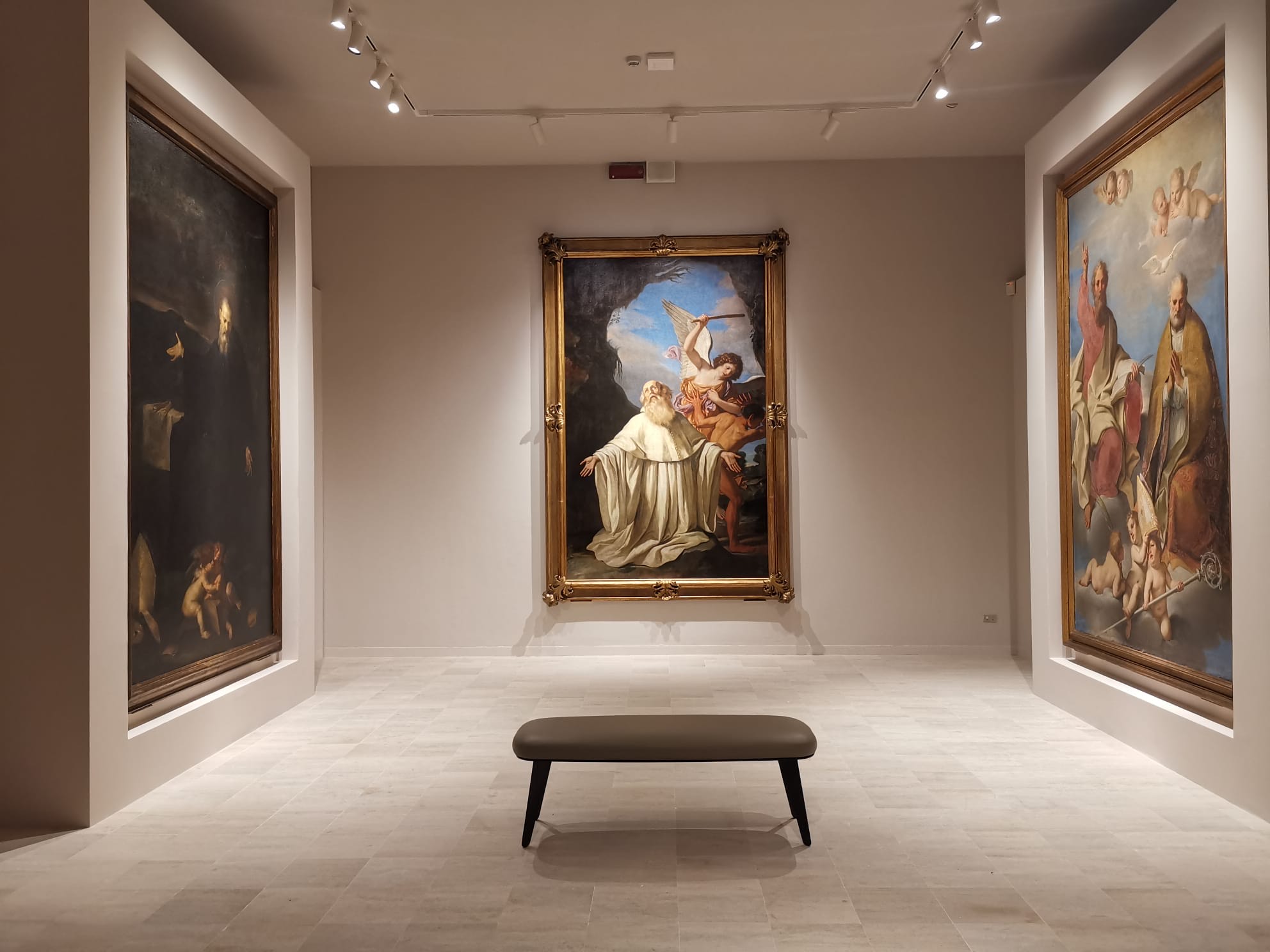
The works executed between the half of the 500 and of the 600, preserved by the Museum of Art of the city of Ravenna and here exposed, are the testimony of the intense cultural, politic and economic relationship which characterized Emilia Romagna, Venetian areas, Toscany in those years, without excluding, as we deduced from the devotional nature of the works, the extended authority of the Papal State. Therefore, the works that are exposed, from the collections made in virtue of the religious corporations’ suppressions and embellished with many donations, bequests, storages, extraordinaries artistic intuitions of important people from Ravenna as Enrico Pazzi and Corrado Ricci, who gave custody of the Accademia di Belle Arti di Ravenna and of the Pinacoteca Comunale, the patients’results and careful acquisitions of archeological, artistic and archival goods. These offer an interesting cross section of the plurality of this period’s cultural reference points. The exhibition itinerary starts from the works of the Adorazione dei pastori con i Santi Girolamo e Bonaventura and Crocifissione con i Santi Antonio Abate e Francesco of Francesco Zaganelli from the town of Cotignola, artist considered by Giorgio Vasari in the 500 the one who is able to succeed to the just dead Nicolò Rondinelli.
Testimonies of the venetian painting are instead the Cristo Redentore of Paris Bordon, artist who works with Tiziano; il cenacolo con Sant’Apollinare e il beato Lorenzo Giustiniani of Matteo Ingoli from the venetian church of Sant’Aponal; the San Benedetto da Norcia (?) of Filippo da Verona; l’Annunciazione e Sant’Apollinare, diptych of the unknown artist. The exhibition itinerary goes on with an artistic dialogue with the venetian painting, still testified by the Martirio dei quattro Santi Coronati, a great altarpiece of Jacopo Ligozzi, a painter from Verona but he’s from Toscany by adoption, who works for over 20 years in the court of Medici with the Martirio dei santi Giacomo Minore e Filippo di Camillo Procaccini which opens to the painting from Bologna, together with the San Girolamo and the San Sebastiano from the Rhenish setting, and the Maddalena in meditazione from the emilian setting. The Allegoria dell’Abbondanza, attributed to the plant life’s Master and the Apollo e Dafne, a Baroque work of art of Cecco Bravo, they represent two elements of uniqueness for the quality of the pictorial profane representation.
In the last exhibition hall it is recreated the group of the big altarpiece from the Church of San Romualdo of the Monastery of Classe; in the central position there’s the major altarpiece of Guercino with San Romualdo combined with San Benedetto of Carlo Cignani and Santi Bartolomeo e Severo in gloria of Marcantonio Franceschini. Concerning the painting of Guercino is the San Giovanni Evangelista of Alessandro Tiarini, which, at the moment of the delivering at the museum, was considered the work of the San Romualdo’s artist. The exhibition ends with the Crocifissione con i Santi Vitale e Apollinare of Arcangelo Resani, work that, even if it still preserves connections with the bolognese and venetian figurative models of the 600, it is directed at the seventeenth century.
